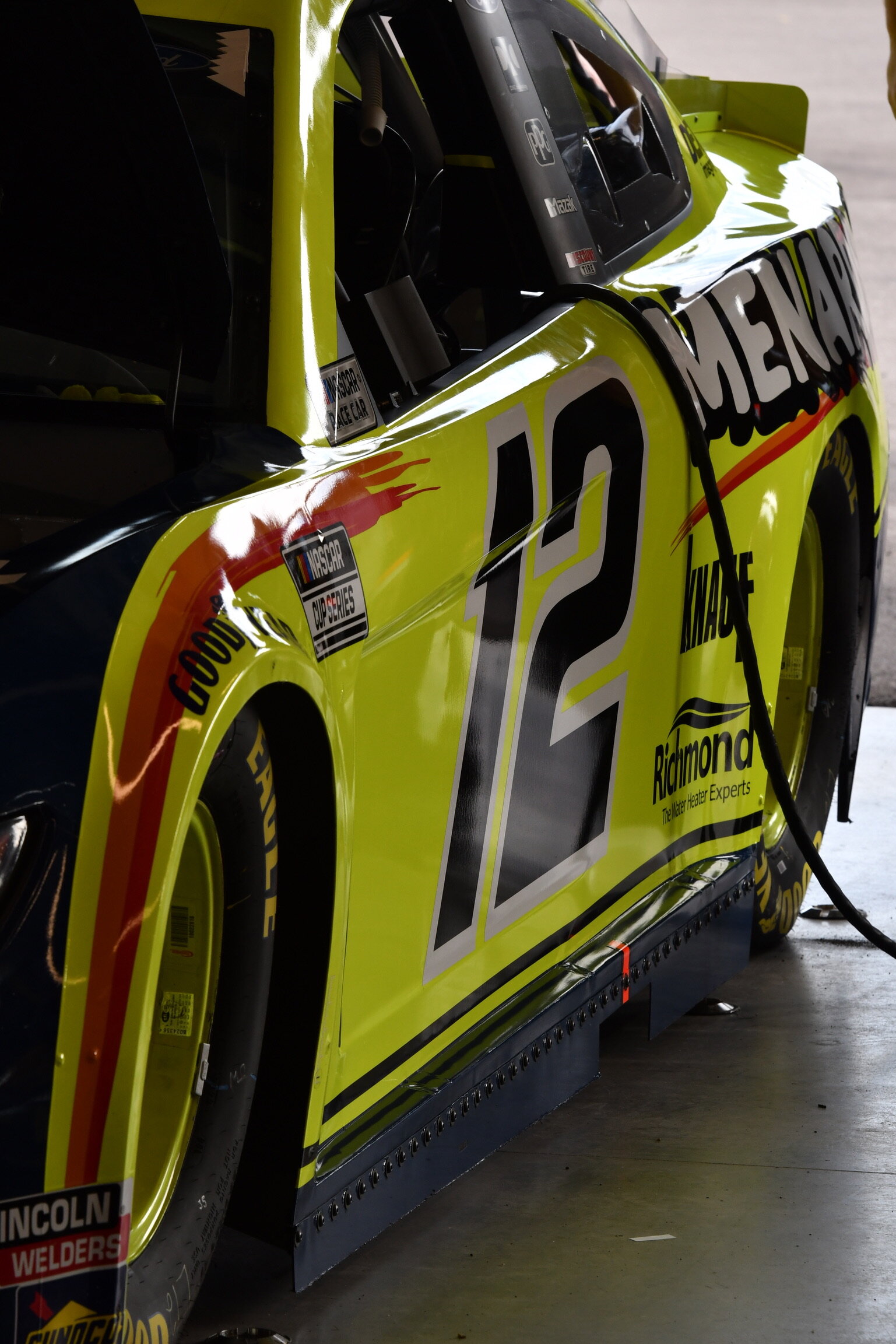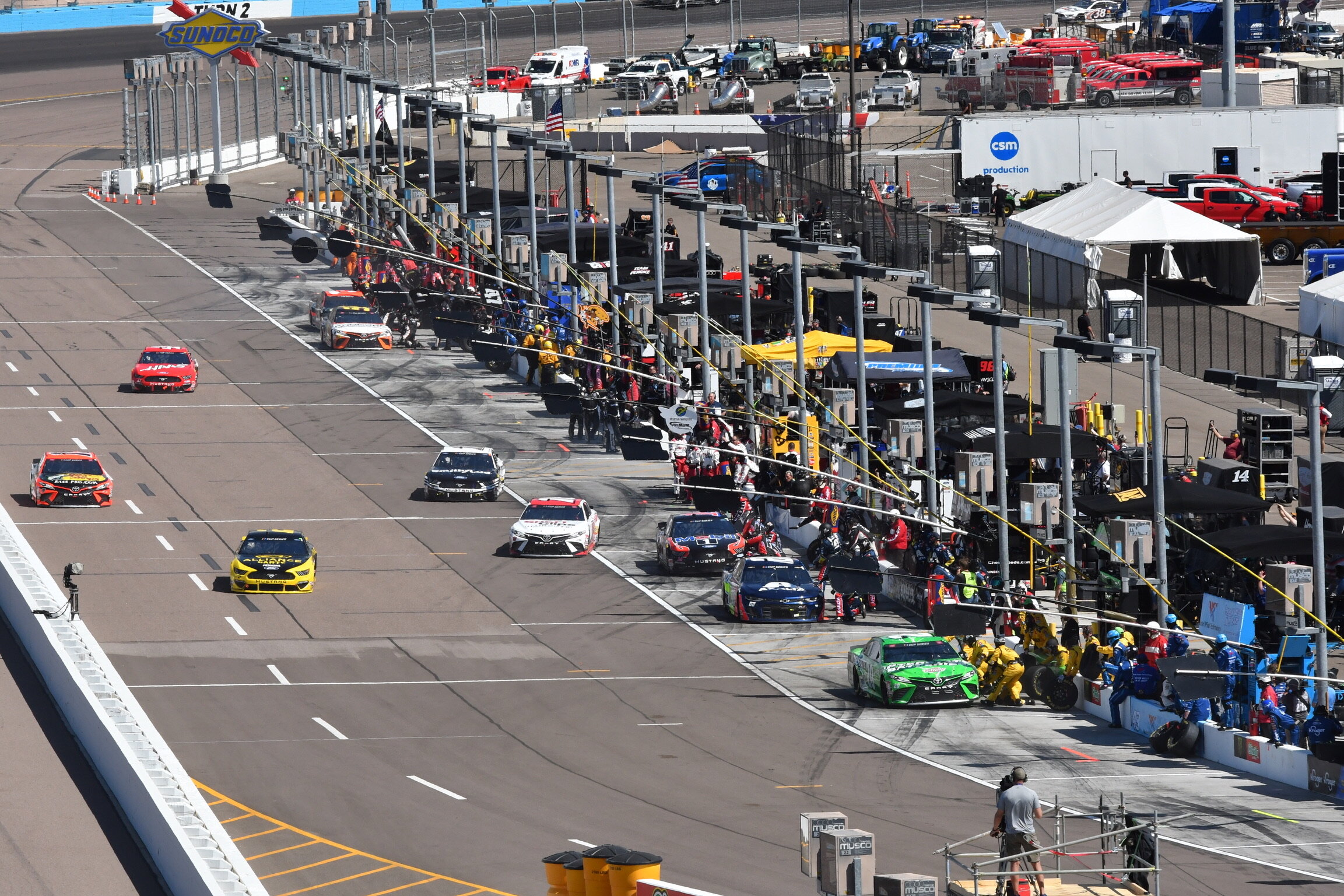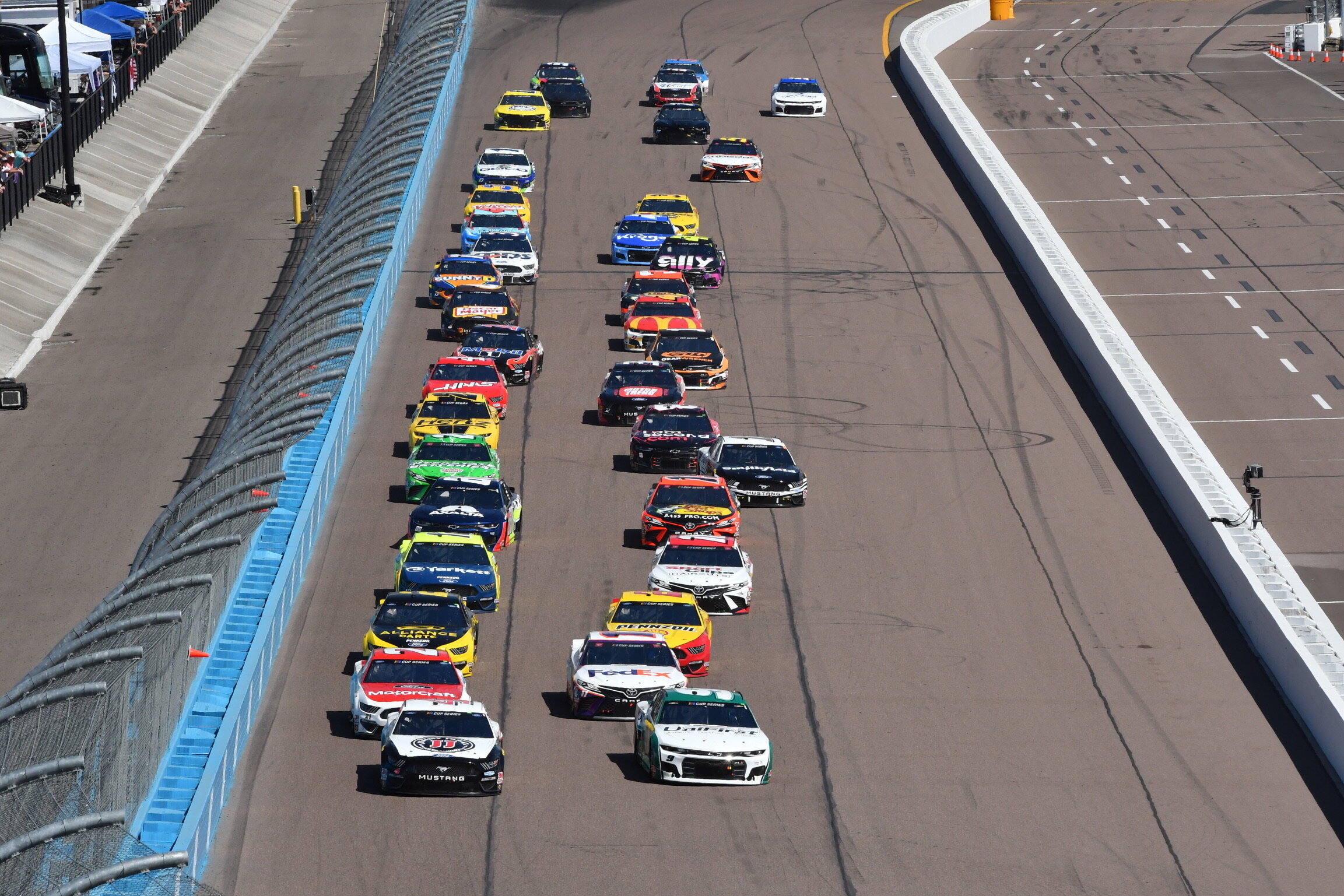NASCAR cup @Phoenix March 2020 Fanshield 500
Our very first NASCAR race was the FanShield 500 that took place on March 8, 2020 at Phoenix Raceway.
Phoenix Raceway is a 1-mile, low-banked tri-oval race track located in Avondale, Arizona, near Phoenix. The motorsport track opened in 1964 and currently hosts two NASCAR race weekends annually.
The race was the sixth of a 29 races championship between February and November. That means almost one race each weekend (2 weeks maximum) all over the States.
No effort is spared for the spectator's eyes and ears.
From 8am, 5 garages holding each 8 cars are open to holders of a paddock pass. A 2 meters walkway enables spectators to watch and photography the mechanics ending the fine-tuning of the cars and warming up the engines.
Notice the size of the wheels. Must be rather heavy for mechanics to run and carry during pit stops. Also observe the security on board of the cars, with the drivers literally surrounded by a protection cage.
What a joy to hear the melody of V8 engines. Unfortunately close to the end of an era!
Toyota with the Camry, Ford with the Mustang and Chevrolet with the Camaro are the three manufacturers.
The very well-organized program enables spectators to walk on the track, experience the banking and sign on the grid line. Country concert, dancing girls, firework, the team pushing their car at the end of the pit lane in qualification order, army jets flying just above the stadium, national hymn, and the speaker’s « start your engine » gets the 40K crowd standing and applauding passionately. The race can start.
The cars are leaving the pit lane in formation behind the pace car for a launched start following the qualifications behind pole winner #9-Elliott. At Phoenix 500 2020.
Row 1: #9 Chase Elliott’s UniFirst Chevrolet and #4 Kevin Harvick’s Jimmy John’s Freaky Fast Rewards Ford
Row 2: #11 Denny Hamlin’s FedEx Freight Toyota and #42 Kyle Larson’s Mc Donald’s Chevrolet
At the entrance of turn 3 of the start lap, Kevin Havick takes a narrow lead under pressure of Chase Elliott, who will take the lead in the next lap.
With 38 cars on a 1-mile racetrack covered in 25 seconds for NASCAR cars at 235 km/h on average, everything is millimetric, with leaders overtaking the last car in less than 15 laps.
A first incident triggers a safety car and many drivers chose to pit, without any change though between the two leaders, Chase Elliott starting first. This time Kevin Harvick took the lead in the next lap.
During a 333 laps race, there are 3 sessions for participants to mark points at the championship. The last session is the one where you get the highest scores. That means at least three starts but due to (or thanks to) incidents many more starts can take place, adding to the pleasure of the spectators and the intensity of the race.
The various incidents during every race allow spectators to enjoy the ballet of mechanics changing the wheels during pit stops and experience the excitement of several lead changes. There were 20 lead changes among 7 drivers.
Safety car is also the moment for spectators to get drinks and food. There were 12 cautions for 73 yellow flag laps.
Joey Logano, driver of the No. 22 Team Penske Ford, held off blue oval stablemate Kevin Harvick in NASCAR Overtime to pick up his second win of the season. Logano led 60 of 316 laps for his 25th career NASCAR Cup Series win.
Though Harvick was disappointed to come up short at his best track, the runner-up finish was his fourth in the top 10 in four 2020 races — which made him the only driver to do that. Rookie Cole Custer, Harvick’s teammate, landed in the top 10 as well, placing ninth for his best-ever Cup Series finish. Chase Elliott led a race-high 93 laps, but a loose wheel sunk his race on Lap 156. Kyle Busch finished third, for just his second top 10 of the season and his second straight top-three finish. Rookie Tyler Reddick battled with the leaders at times as well, before mechanical issues ended his day early.




























































